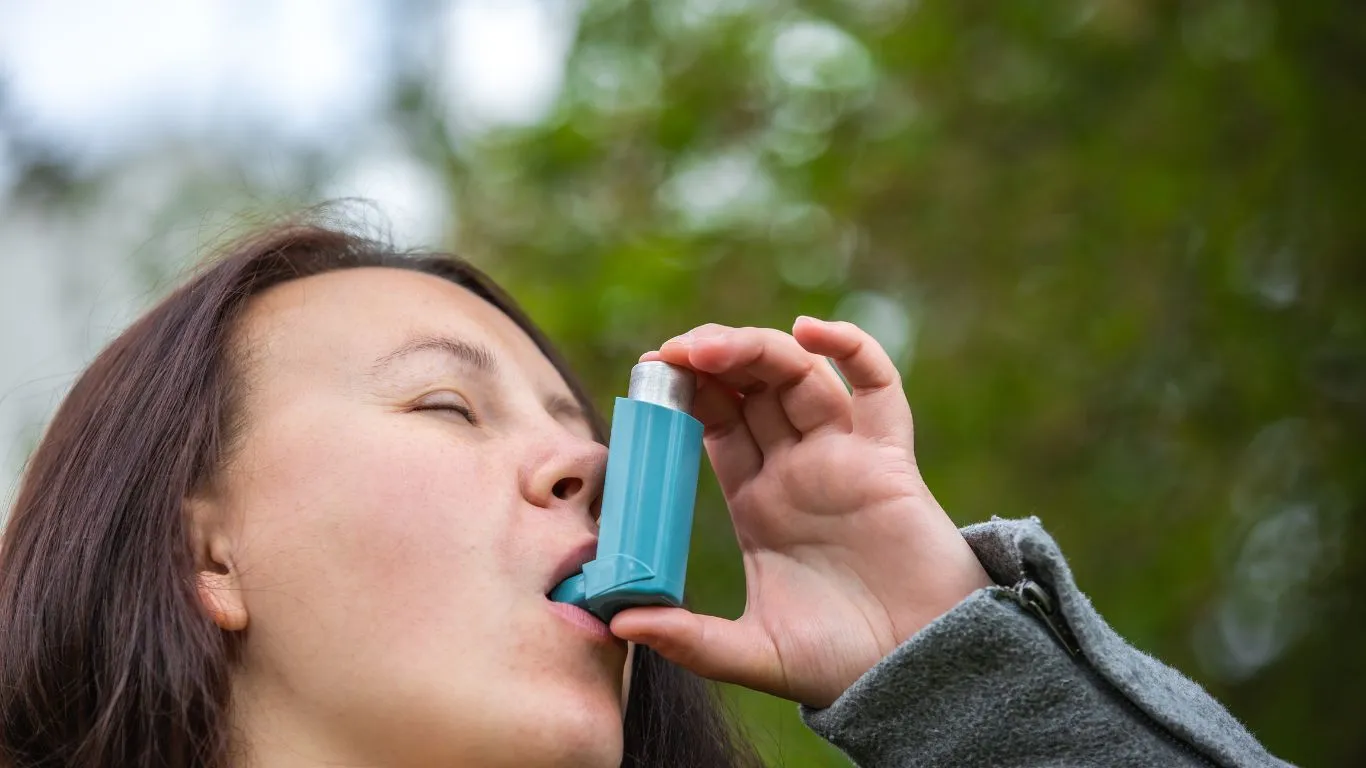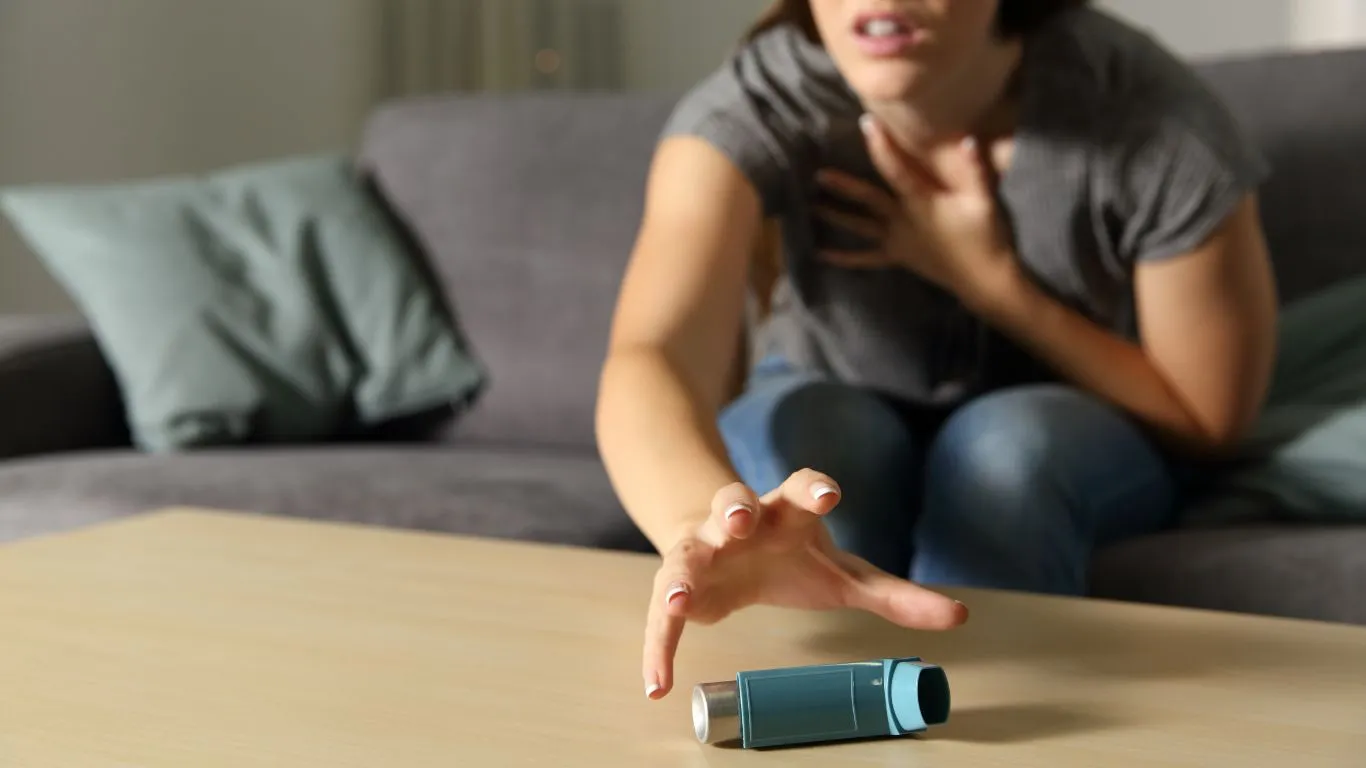Best Humidifier Settings for Asthma Relief That Actually Help
If you’re anything like me, working in pulmonary care has made you hyper-aware of the little things that can trigger asthma symptoms. One of the sneakiest culprits? The air inside our homes. I get asked all the time about the best humidifier settings for asthma relief, especially during those dry winter months or when someone’s AC is running non-stop. And let me tell you — nailing that perfect humidity balance can make a world of difference for people with asthma.
Why Indoor Humidity Levels Matter for Asthma

When it comes to managing asthma at home, humidity often gets overlooked. But it shouldn’t! Too much moisture? You’re basically inviting mold and dust mites to move in rent-free. Not enough? Dry air can irritate your airways, trigger coughing, and leave you feeling like you just inhaled a mouthful of desert dust.
As someone who’s helped countless patients manage asthma symptoms, I always emphasize how critical it is to monitor your indoor air. You can’t always control the pollen outside, but you can absolutely create a healthier space indoors.
What’s the Ideal Humidity Range for Asthma?
The sweet spot? Aim for 30% to 50% humidity. That range is golden. It’s high enough to keep airways from drying out but low enough to stop mold and dust mites from thriving. I usually recommend starting at around 40% and adjusting slightly up or down based on how your body responds — or even what time of year it is.
- Below 30%: Too dry. Can trigger coughing and nasal irritation.
- Above 50%: Too moist. Encourages allergens like mold and mites.
There’s no one-size-fits-all number, but if you’re waking up with a dry throat, or feeling congested without any obvious allergen around, your humidity might be the missing link.
How Humidifiers Can Help — Or Hurt — Asthma Control

I’ve seen firsthand how a simple humidifier can be a total game-changer — but only when used right. I’ll never forget a patient of mine who swore her humidifier made her asthma worse. Turned out she’d been running it at full blast all night, every night… without ever cleaning it. Yikes!
Here’s the thing — humidifiers are amazing tools when used properly. But if they’re not cleaned regularly or are cranked too high, they can actually worsen asthma symptoms.
Key Benefits of Using a Humidifier for Asthma
- Soothes irritated airways – Especially during dry seasons or when heaters are running nonstop.
- Reduces nighttime coughing – Helps keep throat and bronchial tubes moist while sleeping.
- Improves overall breathing comfort – Moist air feels gentler on sensitive lungs.
But let’s be real — this doesn’t mean blasting a cool mist 24/7. It’s about balance and knowing what your body (or your child’s) is telling you. I usually tell families to treat the humidifier like a supplement, not a cure-all. It supports asthma management, but doesn’t replace inhalers, medications, or an asthma action plan.
Signs Your Humidifier Settings Aren’t Working for You

If you’ve already got a humidifier humming away in your room, but you’re not seeing any improvements (or things are getting worse), you might need to reassess your setup. Trust me, I’ve had a few trial-and-error moments in my own house before figuring out what worked best.
Red Flags to Watch For
- Condensation on windows – That’s a sign your humidity is too high.
- Musty smells – Could mean mold or bacteria is starting to grow.
- Persistent coughing or wheezing – May indicate allergens being dispersed into the air.
These are all subtle signs, but they matter. And sometimes all it takes is turning your humidifier down a notch or giving it a deep clean (more on that later!).
How to Set Your Humidifier for Asthma Relief — Without Overdoing It

Alright, let’s get into the nitty-gritty — what are the best humidifier settings for asthma relief? While there’s no “one size fits all,” I’ve found a few general rules that work well for most of my patients, especially those struggling with flare-ups triggered by dry air or allergens.
Start with 40% — Then Fine-Tune
I usually recommend starting your humidifier at around 40% humidity. From there, pay attention to how you’re feeling — or how your little one is breathing. If it still feels dry, nudge it up slowly toward 45%. But if you notice condensation or any funky smells, dial it back down.
Quick tip: Get yourself a reliable hygrometer (a humidity monitor). Many humidifiers come with one built-in, but they’re not always accurate. I use a separate digital one in my home and keep it in the bedroom where we sleep.
Use Auto Mode if Available
Many newer humidifiers have an “auto” setting, which adjusts based on the room’s humidity. These can be game changers. I have one that keeps my daughter’s room around 42%, and it’s made a huge difference during allergy season.
- Auto mode: Great for maintaining stable humidity levels without constantly checking.
- Manual mode: Gives more control, but you’ll need to monitor levels more closely.
Choosing the Right Type of Humidifier for Asthma

Believe me, not all humidifiers are created equal — and some can actually make asthma worse if you’re not careful. I’ve tested a bunch of them personally and through feedback from patients. Let’s break down the main types and which are better suited for asthma management.
Cool Mist vs Warm Mist
This is the classic debate. Both can add moisture to the air, but they operate very differently.
- Cool Mist Humidifiers: These are usually best for asthma. They’re safer for kids (no hot parts) and less likely to cause overheating in the room. Most of my patients use these.
- Warm Mist (Steam Vaporizers): Can help with sinus congestion but may warm the air too much — not ideal for asthma-prone lungs.
From my own experience: When I switched to a cool mist ultrasonic humidifier in our bedroom, I noticed fewer nighttime flare-ups and better sleep overall. It also runs quietly — which is great if you’re a light sleeper like me.
Evaporative vs Ultrasonic
- Evaporative: Uses a fan to blow moisture through a wick. These are effective but can be a bit louder.
- Ultrasonic: Uses vibrations to produce a fine mist. Super quiet and efficient — but they need frequent cleaning to prevent white dust and bacteria buildup.
If you have hard water, consider using distilled water to prevent mineral buildup, especially with ultrasonic models.
Cleaning Your Humidifier — It’s More Important Than You Think

Now, let’s talk maintenance. I can’t stress this enough — a dirty humidifier is worse than no humidifier at all. I’ve had patients tell me their asthma got worse, only to find out their device had turned into a mini mold factory.
How Often Should You Clean It?
My go-to advice? Every 1-2 days for a quick rinse, and a deep clean once a week. And yes, I know it sounds like a lot — but it takes just a few minutes and can prevent weeks of wheezing and coughing.
- Daily: Empty the tank, rinse with clean water, and let it air dry.
- Weekly: Clean with a mix of white vinegar and water (1:1 ratio). Let it soak for 30 minutes, then scrub gently with a soft brush.
Pro tip: Avoid harsh cleaners or bleach, especially if your humidifier vents mist directly into your room. You don’t want those fumes in your lungs.
Filter Changes Matter Too
If your unit has a filter, check the manufacturer’s guidelines. Some need replacing every month or so. A clogged or moldy filter just recirculates allergens — and no one wants that.
In my clinic, I’ve had patients bring in photos of their moldy filters, wondering why their breathing got worse. It’s such a small detail, but it makes a big difference when managing chronic respiratory issues.
Stay tuned — next, I’ll dive into some of the best humidifier models I recommend to my patients (and use at home), along with a few surprising tips for maximizing their asthma-fighting potential.
Top Humidifiers I Recommend for Asthma Relief

Over the years, I’ve had patients ask, “Bianca, can you just tell me which humidifier to buy so I don’t waste my money?” I hear you! There are way too many options out there — and not all of them are asthma-friendly. So, here are a few that I personally recommend based on performance, ease of cleaning, and real-world feedback from patients and my own household:
1. Levoit Classic 300S Ultrasonic Smart Humidifier
- Why I love it: It’s whisper-quiet, has an auto mode that keeps humidity steady, and the app integration is a nice bonus.
- Perfect for: Bedrooms and nurseries — especially for light sleepers.
2. Honeywell HCM-350 Germ-Free Cool Mist Humidifier
- Why it works: Uses UV technology to kill 99.9% of bacteria in the water before misting — a big plus for asthma sufferers.
- Bonus: Easy to clean with fewer nooks and crannies than other models.
3. TaoTronics Ultrasonic Cool Mist Humidifier
- Best budget-friendly option that doesn’t skimp on performance. Adjustable mist levels, quiet operation, and compact design.
Of course, no matter which one you pick, the key is maintenance. Even the fanciest humidifier won’t help if it’s filled with gunk or running with the wrong settings.
Little Habits That Make a Big Difference

Aside from getting the settings right, there are a few small routines that can really elevate how your humidifier helps with asthma relief. I’ve personally adopted these at home and often recommend them to my asthma patients during follow-ups.
1. Positioning Matters
Don’t just plop your humidifier anywhere. Place it a few feet off the floor on a clean, dry surface. Avoid putting it directly against walls or next to curtains. It should be in the open, ideally near where you spend the most time (like the bed or couch).
2. Use Distilled or Filtered Water
Tap water often contains minerals that can create “white dust” when dispersed by ultrasonic models — not ideal for your lungs. Distilled water helps keep the mist cleaner and the machine running better longer.
3. Don’t Let the Room Get Too Humid
This one’s important. I’ve seen folks crank their humidifier so high it feels like a sauna. That can do more harm than good. Watch for foggy windows or that clammy feeling — both signs your humidity is too high. Dial it back to stay within the sweet spot (30%-50%).
References
As a pulmonary nurse practitioner, I always rely on trusted medical sources and real-world experience. If you’re curious to dig deeper into the science of humidity and asthma, check out these reputable organizations:
- Centers for Disease Control and Prevention (CDC)
- American Lung Association
- Asthma and Allergy Foundation of America (AAFA)
- Mayo Clinic
These resources offer solid, evidence-backed information for anyone managing asthma or respiratory conditions at home.
Disclaimer
This article is for informational purposes only and reflects my professional experience and education as a pulmonary nurse practitioner. It should not be used as a substitute for professional medical advice, diagnosis, or treatment. Always consult your healthcare provider before making changes to your asthma management routine or introducing a new device like a humidifier.

Bianca Nala is a compassionate Nurse Practitioner with a strong background in primary and respiratory care. As a health writer for Healthusias.com, she combines her clinical expertise with a talent for clear, relatable storytelling to help readers better understand their health. Bianca focuses on topics like asthma, COPD, chronic cough, and overall lung health, aiming to simplify complex medical topics without losing accuracy. Whether she’s treating patients or writing articles, Bianca is driven by a single goal: making quality healthcare knowledge accessible to everyone.






